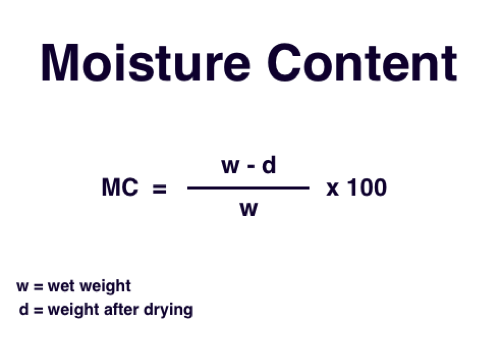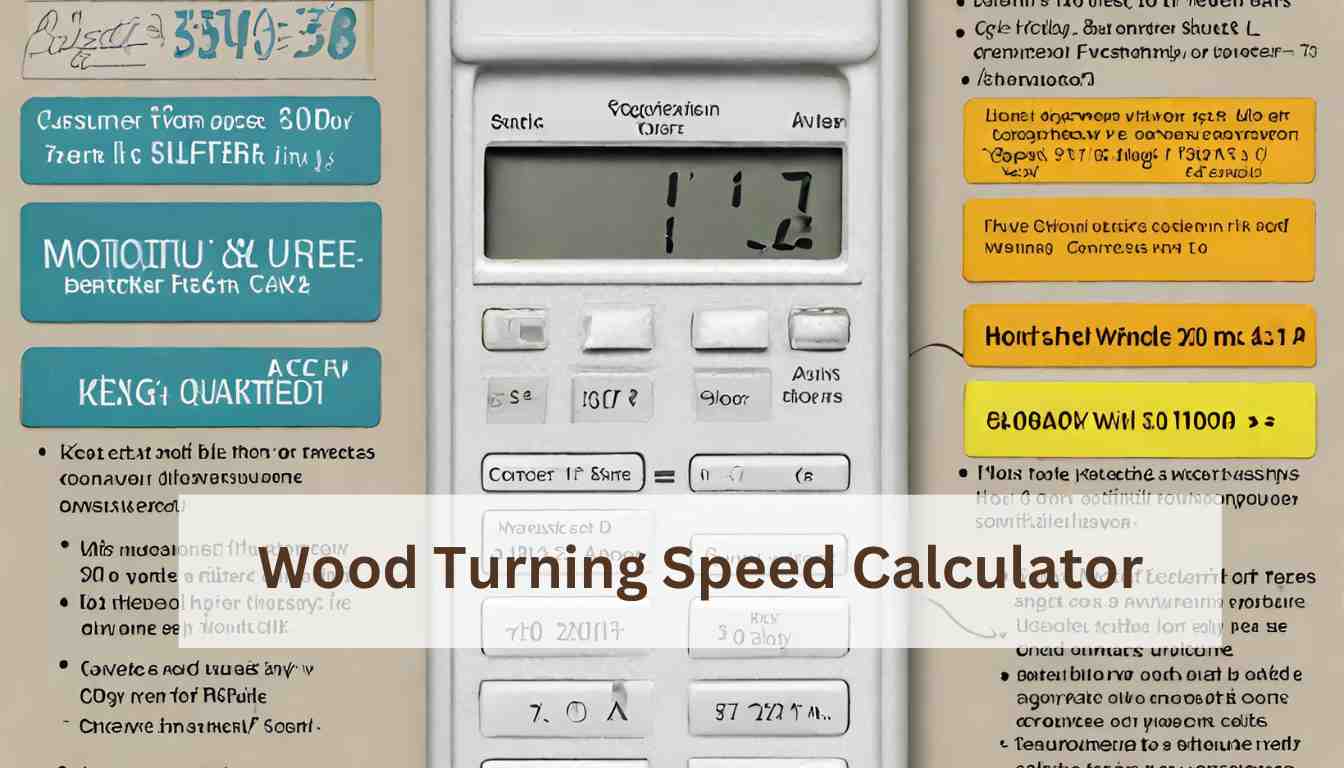A Moisture Content Calculator assesses the percentage of water in a substance. It determines the wet and dry weights to provide vital data.
Moisture Content Calculator
Understanding the water content in materials is crucial across various industries, including agriculture, construction, and pharmaceuticals. Ensuring the right moisture level can significantly affect the quality, shelf life, and usability of products. A Moisture Content Calculator is, therefore, an invaluable tool for professionals who require precision and efficiency in their work.
It uses a simple calculation to help maintain optimal moisture levels, confirming that your materials meet the necessary standards. With its straightforward functionality, this calculator is an essential resource for maintaining quality control and ensuring the integrity of materials and products in numerous industry applications.

Credit: blog.kett.com
The Importance Of Measuring Moisture Content
Knowing the amount of water in materials is crucial. It can change how a product feels and lasts. Moisture content calculator helps us do just that. It tells us how much water is inside things like grain, wood, or powder.
Implications For Industry And Agriculture
In many fields, water levels matter a lot. Industries want products to be safe and strong. Farms need to know if their crops are ready to store or sell. Measure well, and you can avoid losses and keep things top-notch!
- Building industry: Too much moisture can make wood weak.
- Food sector: Dry foods must stay dry to stop spoiling.
- Farming: Selling too wet grain can cause mold.
Effects On Product Quality And Longevity
Quality and how long something lasts can dip if it’s too damp or too dry. Electronics, art, and medicines are just a few examples. A moisture content calculator makes sure items are just right. This means they work well and stay good for longer.
| Product Type | Dry | Just Right | Wet |
|---|---|---|---|
| Wooden furniture | Cracks or splits | Maintains shape | Swells or rots |
| Pharmaceuticals | Breaks down | Stays effective | Clumps or molds |
| Electronics | Malfunction | Operates smoothly | Short circuits |
Principles Of Moisture Content Calculation
The moisture content of a substance is crucial for quality control in various industries. It affects shelf life, usability, and quality. The calculation of moisture content can be through absolute or relative methods. It’s vital to understand these concepts to choose the appropriate measurement technique for your needs.
Absolute Vs. Relative Moisture Content
Determining moisture content can be done through two main types. Absolute moisture content is the weight of water in a material as a fraction of the total weight. This includes both the sample and the water weight. Relative moisture content, on the other hand, compares the weight of water to the dry weight of the material.
| Type | Description | Formula |
|---|---|---|
| Absolute | Total water weight to total weight | MCabs = (Weight of water / Total weight) x 100 |
| Relative | Water weight to dry material weight | MCrel = (Weight of water / Dry weight) x 100 |
Commonly Used Moisture Measurement Methods
Several methods exist to measure moisture content. Each method has its own benefits. Choose based on the material and precision needed.
- Oven Drying Method – It dries the sample and measures weight loss.
- Karl Fischer Titration – It uses chemical reactions to measure water content.
- Near-Infrared Spectroscopy (NIR) – It analyzes light absorption to deduce moisture.
- Microwave Method – It detects changes in material properties as it dries.
- Capacitance Method – It senses the dielectric constant changes in materials.
Each method varies in accuracy, cost, and application. Your choice depends on the specific requirements of your process.
Introducing The Moisture Content Calculator
The Moisture Content Calculator is a modern tool, essential for those in industries like woodworking, construction, or agriculture. It assesses the percentage of water in a given substance accurately. This device replaces guesswork with precision, offering reliable data on moisture levels. It provides clarity and certainty in processes where moisture content is critical.
Key Features And Functionality
The key features of the Moisture Content Calculator stand out, making it an indispensable tool. Here’s what it offers:
- Easy-to-use interface: Understand your measurements with a clear, user-friendly display.
- Quick results: Obtain moisture readings within seconds.
- Portability: Carry this lightweight gadget anywhere you go.
- Versatile measurement range: Measure a wide variety of materials.
- Accurate and reliable: Count on precise data every time.
- Battery powered: Use it on the go, without worrying about power sources.
Advantages Over Traditional Methods
The advantages of the Moisture Content Calculator are clear:
| Traditional Methods | Moisture Content Calculator |
|---|---|
| Time-consuming | Instant results |
| Potential for human error | Precise readings minimize error |
| Requires specific knowledge | Simple operation for anyone |
| Bulky equipment | Compact and portable design |
| Manual data recording | Automatic data capture |
Switching to a Moisture Content Calculator means quicker, more accurate measurements. It allows for error-free operation with minimal training. You save time, reduce mistakes, and can focus more on analysis rather than data gathering.
Step-by-step Guide To Using The Calculator
Understanding moisture content is crucial for various industries like construction, agriculture, and food processing. The Moisture Content Calculator simplifies this task, ensuring precise measurements for quality control. Follow this clear guide to master the calculator with ease.
Sample Preparation And Handling
Preparing your sample correctly is essential for accurate moisture content results. Follow these steps:
- Select an appropriate sample size.
- Clean the container you will use for the sample.
- Weigh the empty container and note its weight.
- Fill the container with your sample material.
- Record the combined weight of the container and sample.
Proper sample handling protects its integrity before testing. Ensure your sample is free from contamination and secure during transport to the testing area.
Entering Data And Interpreting Results
Once your sample is ready, input data into the calculator following these instructions:
- Enter the weight of the empty container.
- Add the weight of the container with the sample.
- Click ‘Calculate’ to get the moisture content percentage.
The calculator will display the moisture percentage, indicating how much water is in your material. A lower percentage means less moisture; a higher percentage indicates more moisture. Use these results to make informed decisions related to your material’s quality and suitability for its intended use.
Here’s a table summarizing the steps for quick reference:
| Step | Action |
|---|---|
| 1 | Prepare the sample |
| 2 | Weigh the container empty and with the sample |
| 3 | Input data into the calculator |
| 4 | Analyze the moisture content results |
Follow these steps to ensure precision in your moisture content analysis. Accurate data input leads to reliable results, which is critical for your material’s performance and safety.
Calibration And Maintenance For Accuracy
Moisture content calculators are essential tools in many industries. To ensure precise measurements, regular calibration and maintenance are vital. Without these, data collected could lead to inaccurate results, affecting product quality and safety. Follow these steps to keep your device in top condition.
Regular Calibration Procedures
Calibration is a critical process for any moisture content calculator. It adjusts the device to measure accurately. Users should calibrate their device periodically according to the manufacturer’s guidelines.
- Check calibration frequency recommendations.
- Use standard samples for calibration.
- Record results and adjust as needed.
- Seek professional calibration services if necessary.
Maintaining Your Calculator For Optimal Performance
Maintenance keeps a calculator running smoothly. Regular checks prevent errors and extend the device’s lifespan.
- Keep the device clean.
- Avoid exposure to extreme conditions.
- Store in a controlled environment.
- Replace batteries or recharge as recommended.
- Consult the manual for specific maintenance tips.

Credit: commons.wikimedia.org
Case Studies And Real-world Applications
Professionals across various industries rely on accurate moisture content measurement. It ensures quality and longevity. From food production to construction, real-world applications of moisture content calculators are diverse. They offer valuable insights. Let’s explore some case studies to understand their impact.
Moisture Content Analysis In The Food Industry
In the food industry, moisture content is critical. It affects taste, texture, and shelf life. Companies use moisture content calculators to maintain standards. Here are examples:
- Cereal manufacturers monitor moisture to prevent spoilage.
- Snack producers ensure crispness by controlling moisture levels.
- Dairy farms use calculators for optimal cheese production.
| Product | Optimal Moisture Content |
|---|---|
| Baked Goods | 12-15% |
| Pasta | 10-12% |
| Meat | 50-75% |
Construction Materials: Ensuring Durability Through Moisture Assessment
Construction materials deteriorate with improper moisture levels. Builders use moisture content calculators to prevent issues. Real-world examples include:
- Verifying concrete moisture ensures strong foundations.
- Wood moisture levels must be checked to prevent warping and decay.
- Proper drywall moisture prevents mold growth.
These cases show moisture assessment’s importance for safe structures.
Frequently Asked Questions Of Moisture Content Calculator
How Do You Calculate Moisture Content?
To calculate moisture content, subtract the dry weight from the wet weight, divide by the dry weight, and multiply by 100 to get the percentage. Use this formula: [(Wet Weight – Dry Weight) / Dry Weight] x 100%.
How Do You Calculate Humidity Content?
To calculate humidity content, measure the amount of water vapor present in the air, commonly expressed as a percentage known as relative humidity, or determine the absolute humidity, which is the actual water content in grams per cubic meter of air.
What Is The Formula For Soil Moisture Content?
The formula for soil moisture content is: Moisture Content (%) = (Weight of Water / Weight of Dry Soil) x 100.
What Is The Formula For Estimating Moisture Content In Wood?
The formula to estimate moisture content in wood is MC = (Ww – Wd) / Wd * 100, where MC is moisture content, Ww is the wet weight, and Wd is the dry weight.
Conclusion
Wrapping up, a reliable moisture content calculator is indispensable for anyone in construction or woodwork. It ensures materials are at their peak for durability and quality. Embrace this tool and witness the precision it brings to your projects. Ready to elevate your workmanship?
Start calculating now.


